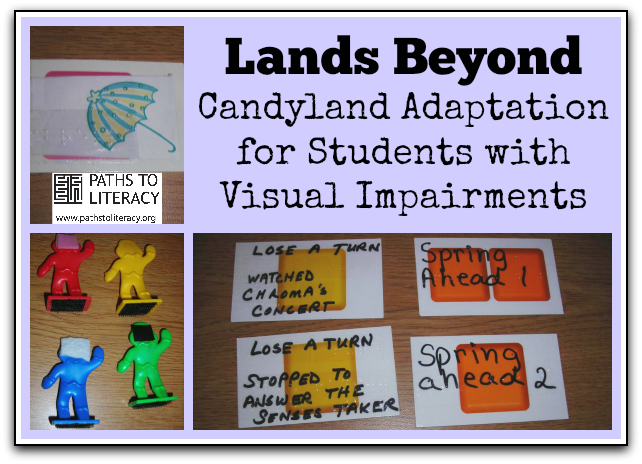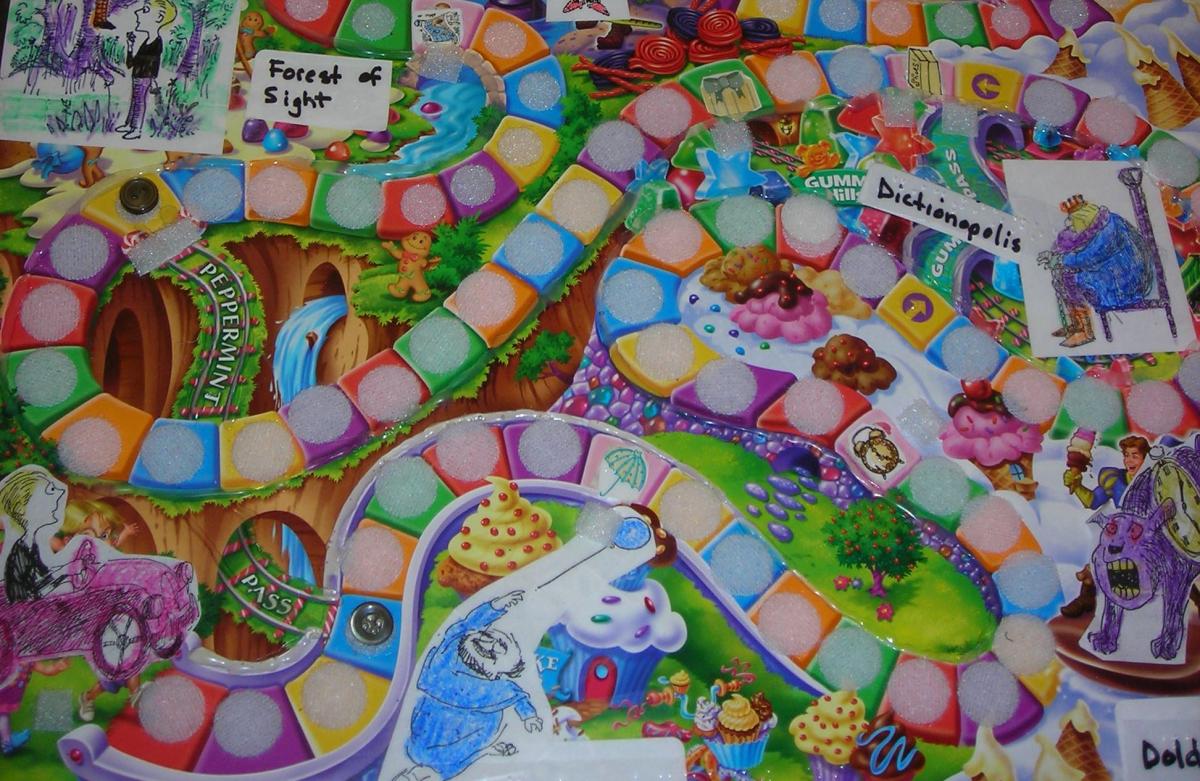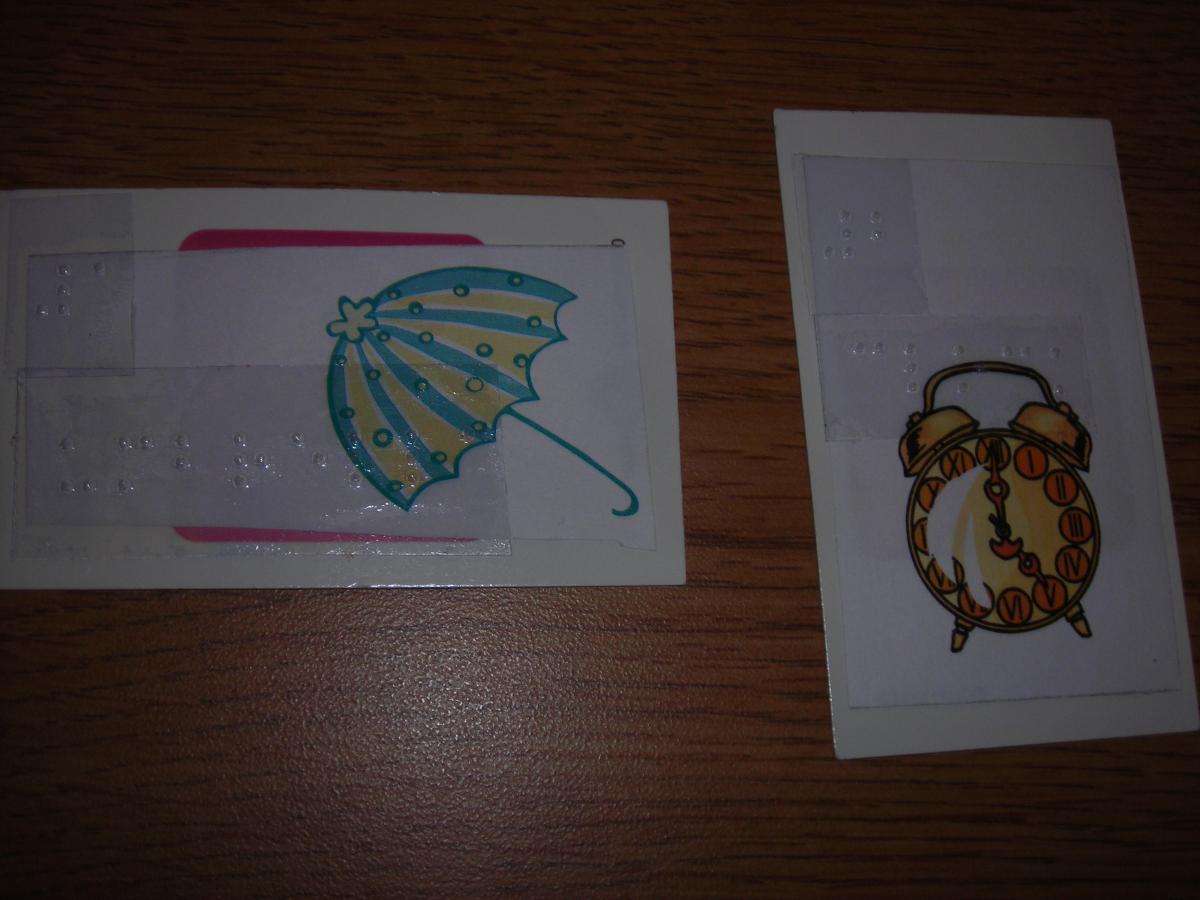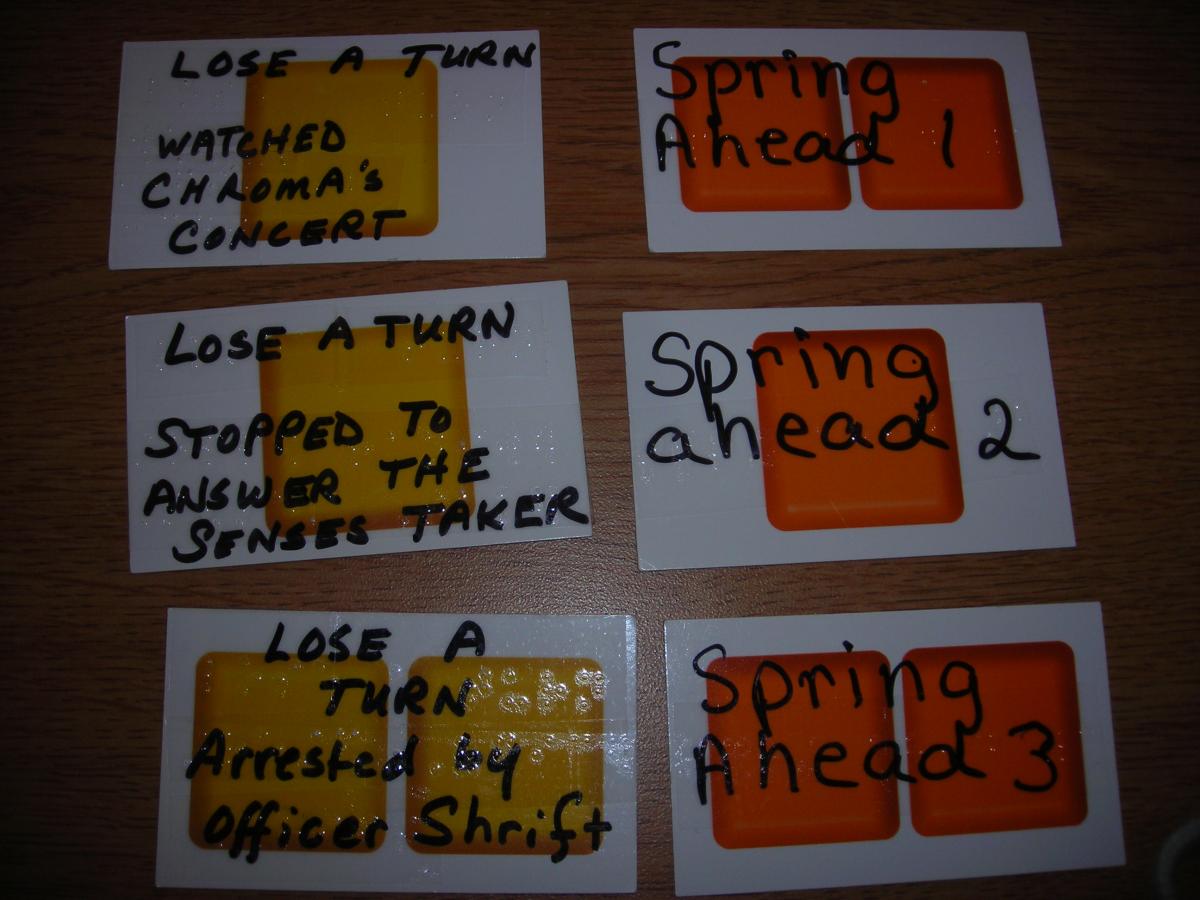Lands Beyond
Submitted by Becky Hoffman on Sep 10, 2012

This is an adaptation of Candy Land based on The Phantom Tollbooth by Norton Jester. This is a story about Milo, a young boy who is bored with life until he finds a tollbooth in his bedroom. He pays the toll and he enters into the Lands Beyond, an imaginary world full of adventure and wordplay. It is designed for students at the 5th grade level, although it can be adapted for other age groups.
This could be made with any game board, but Candy Land lends itself especially well.
Materials:
- Candy Land or game board
- velcro or tactile markers
- introduction to game and directions in braille and large print (see attached)
- braille and large print on cards
- pawns with tactile markers to distinguish them
Procedure:
- Read the story with the students and extensively study the plot, characters, etc. They need to have a thorough understanding of the story in order for the game to make sense.
- The students should be actively involved in the creation of the whole game, including the creation of the story, the introduction to the game, the directions, and ideas for adapting the board.
- The object is to be the first player to reach the Castle in the Air and rescue the Princess of Sweet Rhyme and Princess of Pure Reason.
- Place the cards in a box and mix them up.
- Each player picks a pawn.
- The youngest player goes first. Play then passes to the left.
- On your turn, draw a card then move your pawn as directed.
- Place the used card in the discard box.
- Draw a card and follow the directions.
- If you draw a word/picture/number card to the velcro beside that space.
Attached File(s):
Variations:
- The game board can be attached to a Lazy Susan, so that the players don't knock the pieces over.
- Any game board can be used.
- The game doesn't have to be played in one sitting, as it can take quite a long time to complete a single game. You can write down where the students left off, or leave the board set up if you have the space.



